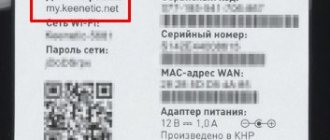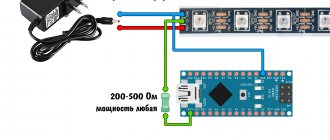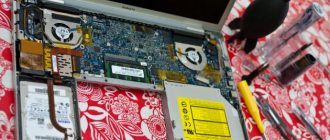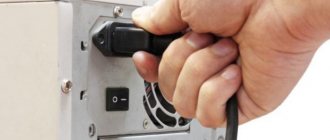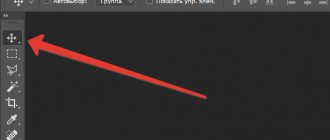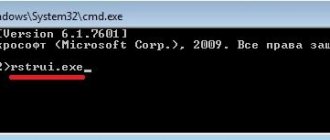I want to return the oleophobic coating on my iPhone! The main thing is inexpensive
The oleophobic coating test on my Apple Watch after using the miracle liquid passed.
There is nothing complicated. One such tube is enough for me to apply the miracle liquid to two screens at once: iPhone and Apple Watch. Approximately 2/3 goes to the first device and 1/3 to the second.
How to use it?
Step 1: Get rid of dust, dirt and fingerprints on the screen.
Step 2. Squeeze the required amount of the contents of the tube into the middle of the device screen (I recommend 1/3 for a watch, 2/3 for a small smartphone and the whole for a large one).
Step 3: Take a microfiber cloth and gently rub the liquid onto the display in an even layer.
Step 4: Wait about 5-10 minutes for the liquid to set.
Step 5: Buff the screen with another microfiber cloth until it's perfectly smooth.
Step 6. Wait another 30-40 minutes, and then begin to fully use the device.
That's all.
Since I actively use my devices, the native oleophobic coating on them has long been gone. This is obvious both from the sensations and from the test for a drop of water, which should not spread, as shown in the photo above.
This miracle liquid from AliExpress does not restore fingerprint protection. However, she imitates it quite believably. According to my feelings, the effect lasts from 2 to 4 months, and this is very good.
The oleophobic coating cannot be replaced this way, but apparently this gel has a similar composition, so it is perfect as a temporary solution.
By the way, on iPhone 8 (Plus) or iPhone X, liquid can be used not only on the front, but also on the back of the device.
This will reduce the number of fingerprints, including on its back. Miracle liquid on AliExpress (RUB 122)
Oleophobic coating: why is it needed and can it be restored - Iron
| src='https://trashbox.ru/files/1088678_ff6674_avatar.png' alt="> | >nickgric , July 27, 2020 - 11:00 Yes, the screen of every modern smartphone is covered with a special coating, the existence of which many are not even aware of |
You definitely paid attention to the line “oleophobic coating” in the technical characteristics of modern smartphones in online stores and in reviews on thematic websites. It is usually indicated as a separate item by manufacturers of protective glasses, even on AliExpress. Telegram channel of the creator of Trashbox with development insights
For the first time, the need for an oleophobic coating was discussed at Apple. This is not surprising, since it was she who was the first to introduce a device whose capacitive screen had to be touched with your fingers, and who launched the general transition from resistive displays. Today, almost every modern smartphone has an oleophobic coating. We know that it protects the screen from fingerprints, greasy marks and other dirt. It’s just a pity that over time it becomes unusable... But why does this happen? This article is about this and more.
What is an oleophobic coating? Which side is it on the iPhone?
The presence of an oleophobic coating can be found in the description of almost every modern smartphone in the middle and high price range. Despite this, not everyone understands what it is and why it is needed.
Let's start with the word "oleophobic." It consists of two simple parts of Latin and Greek origin respectively: oleo and phobos. The first defines an oily or greasy texture, and the second defines fear and horror.
The word “coating” does not need to be explained, and in total we get a surface that is not only not afraid of fat, but, on the contrary, repels and instills fear in it.
The exact composition of the oleophobic coating is not disclosed, but it is known that it includes 3 components: alkylsilane, silicone and solvent. They are the ones who create the very film that protects the screen of your device from sebum from your fingers and other dirt.
Cool stuff! This is a nanometer-thick film that covers the touch screens of iPhones and other devices. It is needed so that they do not collect fingerprints and other dirt, or at least do it noticeably less. However, it was not always used.
A patent for the invention of an oleophobic coating was received on July 20, 2005 by German scientists Melanie Hoffmann, Dr. Gerhard Jonschker and Dr. Michael Overs.
The components included in the coating are applied to the screen by spraying using 2 methods: vapor deposition or using silicon dioxide.
It is impossible to see the oleophobic coating with the naked eye. However, it can be felt. A finger glides on a touch screen with such a film much better than on ordinary glass, and this is another advantage.
Despite the patent of German scientists, we have Apple to thank for the appearance of such a coating on the screens of modern smartphones. It was its engineers who at one time created an improved oleophobic composition and first used it on the iPhone 3Gs screen .
Subsequently, other manufacturers began making displays with oleophobic coating. But to reduce the cost of the device, many of them (especially the Chinese) began to apply it not to the screen itself, but to an additional film glued to it out of the box. By getting rid of it, you usually lose protection from dirt.
How did the oleophobic coating come about and what is it intended for?
The first pioneers of the technology were German scientists, who in 2005 presented the world with protective material for gadgets. In fact, Apple was the first to produce smartphones coated with a special layer that repels dirt. The nanofilm contains materials such as silicone, solvent and alkylsilane. These are the basic components of the technology, however, the names of additional substances have not yet been disclosed. This coating is sprayed using silicon dioxide.
Unfortunately, oleophobic film does not last forever. After a certain time, this thin coating begins to wear off, but how quickly this happens depends on the operating conditions of your smartphone. The more often you use the touch screen, the faster the protection layer wears out.
In the first phone models, the removal of the coating was visible within two months - mainly in those areas of the screen where the user touched the most with his finger. For example, the area of the unlock slider or the area where the display comes into contact with the case. Today's manufacturers say that the coating has now acquired new protection qualities that last up to six months. The nanofilm is destroyed most quickly due to friction. The delicate layer wears off over time even from habitual pressure, and also reacts strongly to the rough fabric of clothing. This is why it is better to store your smartphone in a case rather than in your pocket. Note that the oleophobic coating is damaged by solvents and alcohol wipes. A microfiber cloth is the best solution for cleaning the screen.
Wow! How can you check whether there is such coverage on the iPhone or not?
In addition to the obvious advantages of the oleophobic coating, which reduces the amount of dirt on the screen and improves the tactile sensations of using a smartphone, it also has a big drawback - fragility.
The more actively you use your smartphone, the faster you will lose the oleophobic coating that covers its screen.
You can’t go against the laws of nature, so the coating wears off slowly and surely. This is usually especially noticeable at the bottom of the display, where the application switcher and most other controls are located.
On older devices the problem was critical. For example, on the iPhone 3Gs, in the location of Slide to unlock, the coating wore off within a couple of months. Today everything is not so sad, but the problem still remains.
To check for the presence of an oleophobic coating , you need to take a little water into a pipette and drop it onto the screen of your device. If the water spreads and leaves a mark, the film has long been worn off. If it gathers into a drop that moves across the display entirely before it has time.
Uneven wear of the coating will be noticeable by the behavior of the drop on the screen. In some places it will roll around freely, and in others it will simply spread out.
Be extremely careful while performing this experiment. Do not allow water to get into the earpiece or under the buttons of iPhone and other smartphones. In principle, you can not be afraid of the consequences only on new devices that are protected from moisture according to IP67, IP68 and similar standards.
How to restore the oleophobic coating with your own hands?
Article author: amitchel |
April 7, 2014 | A dirty, stained display - what could be worse? The reason that screens, especially glossy ones, are scary to look at can be either erasure or the initial complete absence of the so-called “oleophobic coating.”
Announcement
The term "oleophobic" comes from the Greek oleos - fat and phobos - fear. This term refers to such a protective coating of the screen in which the fat from our fingers does not remain on the screen. The protective layer should not allow fatty acids to stick to the screen.
Of course, although we think our fingers are clean, they are far from perfect.
In addition to fingerprints, they have a thin layer of fat that our fingers willingly “share” with the screens of our devices. To ensure that mobile phones, tablets and other gadgets developed by expensive design companies do not spoil their appearance when touched by fingers, manufacturers, as a rule, apply special chemicals to them that have the property of repelling fats. The so-called “oleophobic coating”.
However, over time it wears off. Sometimes it is removed due to improper care of the device. For example, wiping the screen with alcohol or vodka in almost 100% of cases radically changes its properties and removes the applied film.
How to restore a lost oleophobic coating yourself? How to give our device the same look? There is no clear answer to this question. Unfortunately, it is practically impossible to do this at home and with your own hands the same way as they do in factories. Chemicals available at home are either unstable and will be removed within the first days of use, or will interfere with the operation of the sensor.
However, there is a decent way out of this situation! If you value appearance, you can do the following:
Announcement
- Wipe the screen thoroughly to remove all fingerprints, dirt, etc.
- Stick the film on!
It is so simple and effective that there is no need to apply any coatings yourself. And the appearance with this method will be excellent.
Attention! On Western forums, our editors have found a really working way to restore the oleophobic coating yourself!
Rating 4 points
optimuslg.ru
The oleophobic coating gradually wears off, but that’s not all...
Manufacturers all strive to ensure that the image on the smartphone screen is as close to its surface as possible. They want you to literally feel the touch of the device interface, so they reduce the thickness of the layers that cover the display.
Of course, the oleophobic coating also does not become thicker, and the nanometer protective layer is quite easy to damage.
Driving your finger across the screen. I repeat, the more often you use your smartphone, the faster you erase the protective layer of its screen.
You move your fingers back and forth across the display and gradually reduce the thickness of this film, which eventually disappears.
Any fabrics with rough pile. No better effect on the screen and contact with various tissues. Even if you don't wipe it with something rough, you're definitely sticking your iPhone in your jeans pocket, which will inevitably wear away that very coating.
It is similarly affected by plain paper and even some napkins with an excessively abrasive structure.
Solvents and derivatives. If they get on the iPhone screen, it can damage the oleophobic coating. Some can even corrode the protective glass of the display to the matrix.
Wet and car wipes. Almost all antiseptic hygiene products and degreasing cosmetics contain alcohol, which wears off the coating.
Anything that contains alcohol. There are plenty of alcohol-containing substances around us, including napkins. Even your toilet water probably contains it, so make sure it doesn’t get on your iPhone screen.
Moreover, it is alcohol that employees of mobile electronics stores most often use to degrease smartphone screens when applying glass or film.
Cheap protective films and glass. Some of them may contain low-quality glue that will literally eat away the oleophobic coating.
Direct sunlight. They also negatively affect the iPhone's screen coverage.
We apply the oleophobic coating with our own hands
Nike women's sneakers are one of the best gifts you can give to your girlfriend.
Shoes from this manufacturer need no introduction. Nike is a legend! Nike is style and freedom! Hurry up to purchase original Nike sneakers in the store https://shoes4u.com.ua/zhenskaja-obuv/nike/nike-air-force/ at the lowest and most affordable price in online stores in Ukraine. High quality and a wide range of shoes, fast dispatch and delivery of purchased goods - all this awaits you in the Shoes4u online shoe store. Oleophobic coating is used in many smartphones and tablet PCs, on touch screens, improving usability and ease of use. This coating provides improved gliding on the screen, does not leave fingerprints on the surface and protects against water. However, it tends to wear off and becomes necessary to reapply after a while.
In service centers, this procedure is by no means cheap. An alternative to this is to apply the coating yourself. This guide shows how to apply an oleophobic coating to the screen of a smartphone or tablet.
First, you need to purchase such coverage. Naturally, you won’t be able to find it in a regular store. Therefore, it is best to order it through an online store or in a specialized store that sells tools for repairing equipment. This set is called “Fusso SmartPhone”.
Step 1
A clean piece of microfiber cloth is included in the package. Using it, wipe the glass of your mobile phone until it is perfectly clean, leaving no traces or dust on its surface.
Step 2
Apply Fusso liquid to the screen of your mobile phone. It is enough to drop 10-15 drops onto the surface. Afterwards, using microfiber, quickly rub the drops into the smartphone screen, evenly distributing them over the surface until the drops dry.
When applying to tablet PCs, it is better to divide the screen area into 4 or 8 sections and rub the drops into the corresponding area of the touch screen, as the liquid dries very quickly. The volume of liquid per unit area is the same as for smartphones.
Step 3
Repeat “Step 2” two or three times and leave the device for 6-8 hours without touching the screen surface. During this time, the oleophobic film will be tightly absorbed into the touch screen.
We strongly recommend repeating the procedure from section “Step 2” more than once. It is best to apply a layer on different days. This is necessary so that each subsequent layer of coating is firmly ingrained into the structure of the screen, which will increase its performance and durability.
Note! Any remaining coating and drips on the touch screen after application can be removed using an ordinary piece of paper. However, you should not remove excess drops while “sucking” the layer into the screen. Thus, using this method, you can easily provide your smartphone with a high-quality, durable oleophobic layer, as in expensive and flagship smartphone models.
www.sviaziservis.org
How to keep the oleophobic coating on your iPhone safe longer
I will not recommend that you use your favorite smartphone less in order to extend the life of the oleophobic coating on its screen. However, you can significantly increase its service life without this.
First , wipe the display only with a soft cloth - preferably microfiber, which is also used to keep glasses and other devices clean.
Microfiber, also called microfibre, is made up of nylon fibers, polyester and other molecular compounds. It was invented in 1976 specifically to remove dirt from sensitive surfaces, so this solution will suit you.
Secondly , do not resort to chemicals or other aggressive substances even to clean stubborn stains on your iPhone.
Even the dirtiest smartphone can be completely cleaned with a slightly damp microfiber. Just wet it with plain water, try to squeeze it out as much as possible and wipe your favorite smartphone.
This cleaning method is recommended even on the official Apple website.
Thirdly , try not to carry your iPhone in your pocket or use cases that cover the screen of the device.
The less friction your smartphone screen gets, the better. The easiest way is to put it in a backpack or bag, then it will not rub against the fabric when you just move.
Fourth , try not to leave your iPhone on a windowsill, on a holder in a car, on the beach or in other places that are easily exposed to sunlight.
It's best to hide it out of their reach, and the battery and other components of the device will thank you for this.
Fifthly , try to glue only branded protective films and glass to the screen of an expensive smartphone. They should not contain components harmful to the oleophobic coating.
As practice shows, these 5 simple tips together will help you extend the life of the oleophobic layer from 6 to 12 months and even 2 years.
Oleophobic coating - protective films: which is better
The protective film also has an oleophobic layer
Good protective films and glasses also have an oleophobic layer.
To check whether your device has such a layer, it is not necessary to glue such protection to the display. To check, use plain water or a marker (water-based).
If an oleophobic coating is present, it will repel the layer applied by the marker and turn it into small drops.
Comparison of two protective coatings with and without an oleophobic layer in this video:

